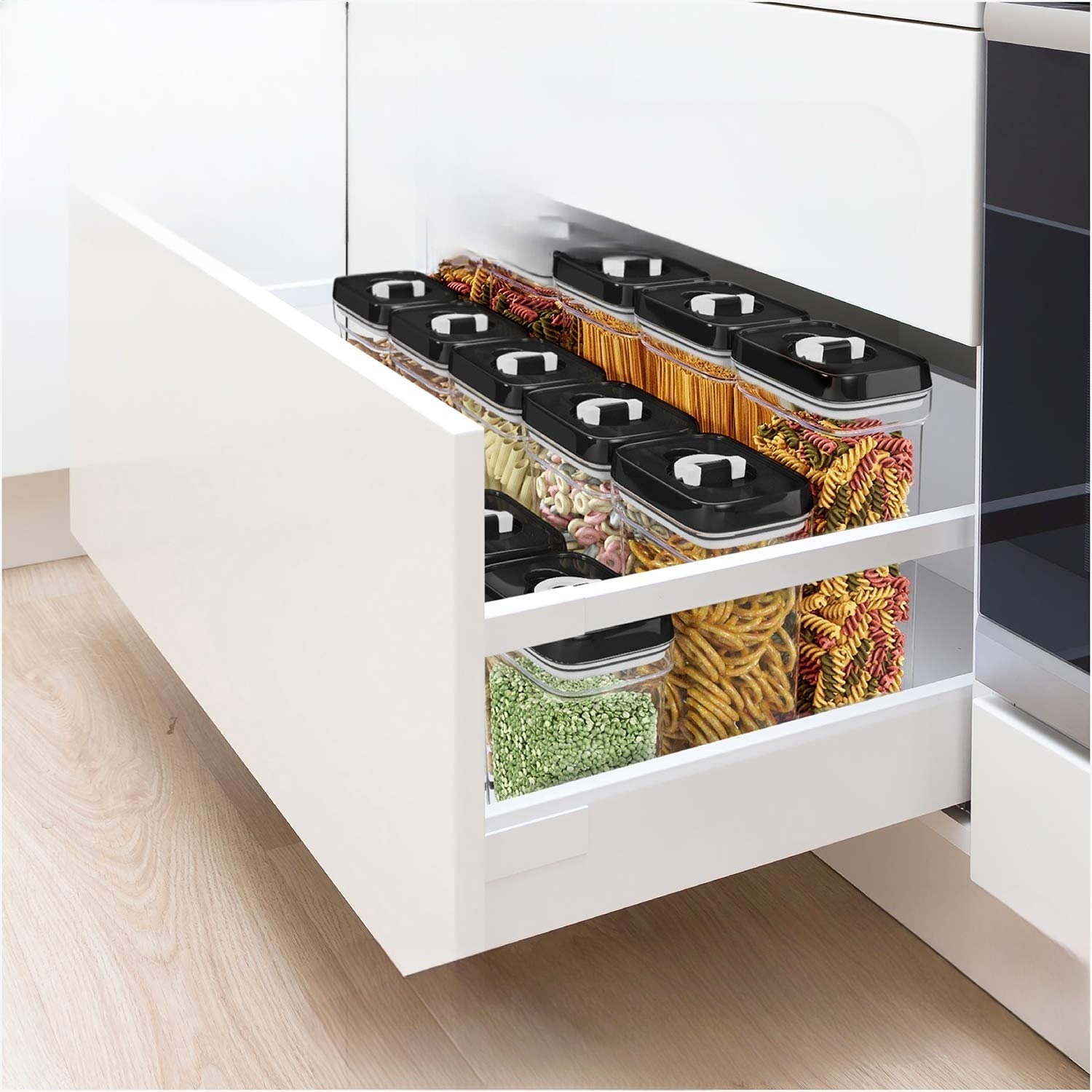

Articles
How To Get Rid Of Pantry Bugs
Modified: January 23, 2024
Looking for effective ways to get rid of pantry bugs? Discover expert tips and tricks for eliminating these pesky insects from your pantry storage.
(Many of the links in this article redirect to a specific reviewed product. Your purchase of these products through affiliate links helps to generate commission for Storables.com, at no extra cost. Learn more)
Introduction
Welcome to our complete guide on how to get rid of pantry bugs. Dealing with pesky insects invading your pantry can be a frustrating and unsightly problem. Not only can pantry bugs contaminate your food, but they can also quickly multiply and infest other areas of your kitchen. But fret not, because in this article, we will provide you with step-by-step instructions on how to identify, prevent, and effectively eliminate pantry bugs once and for all.
Discovering pantry bugs in your kitchen can be quite alarming, and it’s crucial to take immediate action to avoid further infestation. These tiny creatures can find their way into your pantry through a variety of sources, including contaminated food products, store-bought items, or even cracks and gaps in your kitchen walls. By understanding the different types of pantry bugs, you can better identify the culprit and take appropriate measures to eliminate them.
Prevention is key when it comes to keeping your pantry bug-free. We will share essential tips and measures you can implement to minimize the likelihood of pantry bug infestations. From proper food storage techniques to sealing cracks and gaps, these preventive steps will help create an inhospitable environment for pantry bugs.
Once you’ve taken preventive measures, it’s time to tackle the existing infestation head-on. Our step-by-step guide will walk you through the necessary actions to rid your pantry of bugs. From cleaning and decluttering to using natural repellents, we will provide you with effective methods that will help eliminate pantry bugs safely and efficiently.
Remember, maintaining regular inspections and implementing preventive measures in the long term will ensure that your pantry stays bug-free. With our comprehensive guide, you’ll have all the knowledge and tools to tackle any pantry bug infestations that come your way. Let’s dive in and reclaim your clean and pest-free pantry!
Key Takeaways:
- Identify, prevent, and eliminate pantry bugs by understanding their types, implementing preventive measures, and taking swift action to clean, declutter, and seal your pantry. Regular inspections are key to maintaining a bug-free space.
- Keep your pantry bug-free by storing food properly, using natural repellents, and sealing cracks and gaps. Regular inspections and swift action are crucial in preventing and eliminating pantry bugs.
Read more: How To Get Rid Of Bed Bugs
Identifying Pantry Bugs
Before you can effectively eliminate pantry bugs, it’s essential to correctly identify the type of bug you’re dealing with. Different pantry bugs have distinct characteristics and behaviors, which can help you determine the appropriate course of action. Here are some common types of pantry bugs and how to identify them:
- Indianmeal Moths: Indianmeal moths are one of the most common types of pantry pests. These pests have distinctive wings with a combination of reddish-brown and gray coloration. The larvae are small, cream-colored worms with brown heads. Indianmeal moths infest various dry food products, leaving behind silken webbing and cocoons.
- Sawtoothed Grain Beetles: Sawtoothed grain beetles are small, flat, and brown beetles. They have six saw-like projections on their thorax, which gives them their name. These pests infest cereal, rice, flour, and other grain-based products. Look for tiny holes and chewed packaging as signs of their presence.
- Weevils: Weevils are small beetles with elongated snouts. They come in various species, including rice weevils, granary weevils, and maize weevils. Weevils infest stored grains, rice, cereals, and pasta. Look for small holes, webbing, and the presence of adult weevils in your pantry.
- Flour Beetles: Flour beetles are reddish-brown beetles that infest flour, cereal, and other grain products. The two most common types are the red flour beetle and the confused flour beetle. Look for their small, cylindrical bodies and the presence of their larvae, which are small, whitish worms.
- Drugstore Beetles: Drugstore beetles are small, reddish-brown beetles that infest a wide range of dried food products, including spices, dried fruits, and grains. They have distinct grooves on their wing covers and are capable of flying. Look for tiny holes and fine powder (frass) as indicators of their presence.
- Cigarette Beetles: Cigarette beetles are small, oval-shaped beetles with a brownish color. They infest dried tobacco products, spices, nuts, and dried fruit. Look for tiny holes, webbing, and their presence near infested items.
By carefully inspecting your pantry and identifying the specific type of pantry bug, you can tailor your approach to effectively eliminate them. If you’re having trouble identifying the pests, consider capturing a few specimens in a Ziploc bag and consulting with a local pest control professional for accurate identification.
Common Types of Pantry Bugs
Pantry bugs, also known as stored product pests, can be an unwelcome presence in your kitchen. These insects have a knack for finding their way into your stored food products, causing contamination and potential health risks. Here are some common types of pantry bugs you may encounter:
- Indianmeal Moths: Indianmeal moths (Plodia interpunctella) are among the most prevalent pantry bugs. The adult moths are small, with a wingspan of about 0.6 to 1 inch. They have a distinctive reddish-brown color on the outer half of their wings and a grayish color on the inner half. Indianmeal moths infest various dry food products, such as cereal, flour, rice, nuts, and pet food. The larvae are small, creamy-white caterpillars with a brown head and can spin silken webbing in infested food.
- Sawtoothed Grain Beetles: Sawtoothed grain beetles (Oryzaephilus surinamensis) are small, flat, and brown beetles. They get their name from the six saw-like projections on the sides of their thorax. Sawtoothed grain beetles infest a wide range of dry food products, including cereal, pasta, rice, flour, and dried fruits. They can chew through packaging and contaminate the food with their feces and secretions.
- Weevils: Weevils are a type of beetle that belong to the Curculionidae family. These pantry bugs can vary in size and color, but they generally have elongated snouts and distinctive antennae. The most common types of weevils found in pantries include the rice weevils (Sitophilus oryzae), granary weevils (Sitophilus granarius), and maize weevils (Sitophilus zeamais). Weevils infest stored grains, including rice, wheat, barley, oats, and corn. They can chew through packaging and leave holes in infested food products.
- Flour Beetles: Flour beetles are reddish-brown beetles that belong to the Tribolium genus. The two most common species are the red flour beetle (Tribolium castaneum) and the confused flour beetle (Tribolium confusum). Flour beetles infest flour, cereal, pasta, cake mixes, spices, and other grain-based products. They can contaminate the food and produce a pungent odor. The larvae are small, whitish worms that feed on the infested food.
- Drugstore Beetles: Drugstore beetles (Stegobium paniceum), also known as bread beetles or biscuit beetles, are small, reddish-brown beetles. They infest a range of dried food products, including spices, herbs, dried fruits, pet food, and tobacco. Drugstore beetles can fly and are attracted to light sources. They leave behind tiny holes in infested items and a powdery frass (excrement).
- Cigarette Beetles: Cigarette beetles (Lasioderma serricorne) are small, oblong beetles that are similar in appearance to drugstore beetles. They infest tobacco products, including cigarettes, cigars, and pipe tobacco, but can also be found in spices, dried fruits, and nuts. Cigarette beetles can fly and leave behind small holes and fine powder (frass) in infested items.
Identifying the type of pantry bug you’re dealing with is important for effective pest control. Each type may require different treatment methods, so proper identification will ensure you take the necessary steps to eliminate the infestation and prevent future occurrences.
Prevention Measures
Prevention is key when it comes to keeping your pantry free from bugs. By implementing a few simple measures, you can minimize the risk of infestation and preserve the freshness and quality of your stored food products. Here are some effective prevention measures to consider:
- Inspect and quarantine: Before bringing any packaged food items into your pantry, inspect them thoroughly for signs of damage or infestation. Look for tears, holes, or any evidence of bugs. If you notice anything suspicious, it’s best to quarantine the product in a sealed bag or container until you can determine if it is infested.
- Store food properly: Proper food storage is crucial for preventing pantry bugs. Store dry food products such as grains, flour, cereal, and beans in airtight containers made of glass, plastic, or metal. This will prevent bugs from accessing the food and deter them from infesting your pantry. Remember to label containers with expiration dates for easy identification.
- Maintain cleanliness: Keep your pantry clean and tidy to deter pantry bugs. Regularly clean shelves, cabinets, and corners of any spills or crumbs. Vacuum or sweep the floor to remove any food debris that may attract bugs. Proper sanitation practices will minimize potential food sources for pests.
- Seal cracks and gaps: Inspect your pantry for any cracks, crevices, or gaps in the walls, shelves, or floors. Seal these openings using caulk or silicone to prevent pantry bugs from entering your pantry from neighboring areas.
- Rotate food items: When restocking your pantry, practice the “first in, first out” rule. This means using older food products before opening newer ones. By rotating your food items, you reduce the chances of keeping expired or infested products in your pantry for an extended period.
- Keep a clean kitchen: Pantry bugs are attracted to food and moisture sources throughout your kitchen. Regularly clean countertops, sinks, and other areas to eliminate any crumbs or spills. Fix any leaks or plumbing issues promptly to prevent excess moisture that can attract pantry bugs.
- Use natural repellents: Consider using natural repellents such as bay leaves, cloves, and lavender sachets in your pantry. These scents are known to repel pantry bugs. Place them in your storage containers or hang them in fabric pouches to deter pests from infesting your food.
- Regular inspections: Conduct regular inspections of your pantry to identify any early signs of infestation. Look for tiny holes, webbing, larvae, or adult bugs. By catching an infestation early, you can take immediate action to remove the affected food items and prevent further spread.
By following these prevention measures, you can significantly reduce the risk of pantry bug infestations. Remember, consistent maintenance and vigilance are key to maintaining a bug-free pantry and preserving the quality of your stored food.
Steps to Get Rid of Pantry Bugs
Discovering pantry bugs in your kitchen can be unsettling, but fear not! With the right steps and a bit of patience, you can effectively eliminate pantry bugs and regain control of your pantry. Follow these steps to get rid of pantry bugs:
- Clean and declutter your pantry: Start by emptying your entire pantry. Remove all food items, including those not yet infested. Thoroughly clean the shelves, corners, and crevices using a mild detergent and warm water. Wipe away any spills, crumbs, or residue that could attract bugs. Use a vacuum cleaner to clean up any debris or insects.
- Remove infested items: Inspect each food item carefully. If you find any signs of infestation, such as webbing, larvae, or adult bugs, dispose of the affected items immediately. Seal them in a plastic bag and discard them in an outdoor trash bin. Do not compost infested items, as this can lead to further infestation.
- Vacuum and wipe down shelves: After removing the infested items, vacuum your pantry shelves thoroughly. Pay close attention to cracks, crevices, and corners where bugs may hide. Use a damp cloth or sponge with a mild cleaning solution to wipe down the shelves. This will help eliminate any remaining eggs or larvae that may have been missed during cleaning.
- Use natural repellents: Employ natural repellents to deter pantry bugs from returning. Place bay leaves, whole cloves, or sachets of dried lavender in your pantry. These natural scents can help repel bugs and prevent future infestations. Remember to replace or refresh the repellents periodically to maintain their effectiveness.
- Seal cracks and gaps: Inspect your pantry for any cracks or gaps and seal them using caulk or silicone. This will prevent pantry bugs from entering your pantry from neighboring areas, reducing the chances of re-infestation.
- Store food properly: Transfer your dry food items into airtight containers made of glass, plastic, or metal. This will help prevent pantry bugs from accessing your stored foods. Be sure to label the containers with expiration dates for easy identification.
- Regularly inspect and rotate food: Implement a regular inspection routine for your pantry. Check for any signs of infestation, such as webbing, larvae, or adult bugs. Additionally, practice the “first in, first out” rule when restocking your pantry. Use older food items before opening newer ones to avoid keeping expired or infested products for extended periods.
- Seek professional help if needed: If your infestation persists or if you’re dealing with a severe pantry bug problem, consider contacting a professional pest control service. They have the expertise and appropriate treatments to eliminate the infestation effectively.
By following these steps diligently, you can eliminate pantry bugs and create a more hygienic and pest-free environment in your pantry. Remember to maintain good cleanliness and regularly inspect your pantry to prevent future infestations. With a proactive approach, you’ll keep pantry bugs at bay and ensure your stored food remains fresh and bug-free.
Read more: How To Get Rid Of Outdoor Bugs
Clean and Declutter Your Pantry
One of the most crucial steps in getting rid of pantry bugs is to clean and declutter your pantry. This process not only eliminates existing bugs, eggs, and larvae but also creates a clean environment that deters future infestations. Follow these steps to effectively clean and declutter your pantry:
- Empty your pantry: Start by removing all the items from your pantry shelves. Take everything out and place them on a clean surface, such as your kitchen counter or dining table. This will allow you to thoroughly clean each shelf without any obstructions.
- Inspect food items: As you remove the items, inspect each one carefully for any signs of infestation. Look for webbing, larvae, adult bugs, or any other indicators of pantry bugs. Separate the infested items from the bug-free ones. Seal the infested items in a plastic bag and discard them in an outdoor trash bin.
- Wipe down shelves: Once your pantry is empty, use a mild detergent and warm water solution to clean the shelves. Dip a clean cloth or sponge into the soapy water and wipe down all the surfaces, including the corners and edges. Pay special attention to any spills, crumbs, or residue that may have accumulated. Rinse the cloth or sponge frequently to avoid spreading dirt or bugs.
- Vacuum the pantry: After wiping down the shelves, use a vacuum cleaner to remove any remaining debris, dust, or insects. Pay close attention to the corners, cracks, and crevices where pantry bugs may hide. Consider using a nozzle attachment with a brush to thoroughly clean these hard-to-reach areas.
- Clean storage containers: If you store your pantry items in containers or jars, take the time to clean them as well. Empty out each container, wash it with warm soapy water, and rinse it thoroughly. This will ensure that your stored food remains fresh and free from any residual bugs or contaminants.
- Organize and declutter: Before returning the items to your pantry, take the opportunity to declutter and organize. Discard any expired or unused items. Consider donating unopened, non-infested items that you no longer need or use. Group similar items together, such as cereals, grains, and canned goods, to make it easier to find what you need in the future.
- Properly store food: As you restock your pantry, ensure that all food items are stored in airtight containers. Transfer dry goods such as grains, flour, and pasta into sealable containers made of glass, plastic, or metal. This prevents bugs from accessing the food and provides an extra layer of protection against infestation.
- Maintain cleanliness: To prevent future infestations, make it a habit to regularly clean your pantry. Wipe down the shelves and containers periodically to remove any crumbs or spills that may attract pantry bugs. Sweep or vacuum the floor around the pantry to eliminate any food debris.
By thoroughly cleaning and decluttering your pantry, you create an inhospitable environment for pantry bugs. This not only eliminates existing infestations but also helps prevent future ones. Remember to regularly inspect and maintain cleanliness in your pantry to ensure a bug-free and organized storage space for your food items.
Remove Infested Items
When dealing with pantry bugs, it is crucial to remove infested items from your pantry immediately. By identifying and discarding these items, you can prevent the spread of the infestation and minimize the risk of further damage. Follow these steps to effectively remove infested items from your pantry:
- Inspect all food items: Carefully examine each food item in your pantry for signs of infestation. Look for webbing, larvae, adult bugs, or any other indicators of pantry bugs. Pay close attention to open packages, torn packaging, or containers with visible damage.
- Separate infested items: As you identify infested items, separate them from the bug-free ones. Use a clear plastic bag or a dedicated container to store the infested items. This will help prevent the bugs from spreading to other areas of your pantry or infesting other items during disposal.
- Seal and discard infested items: Once you have gathered all the infested items, seal the plastic bag tightly or secure the container with a lid. This will prevent any bugs from escaping or infesting other areas of your home. Dispose of the bag or container in an outdoor trash bin as soon as possible.
- Do not compost infested items: It is important not to compost any infested items, as this can lead to further problems. Pantry bugs can survive and multiply in compost piles, potentially causing infestations in other areas of your garden or home. Instead, dispose of infested items in your regular trash collection.
- Thoroughly clean infested areas: After removing the infested items, thoroughly clean the areas of your pantry where they were stored. Use a mild detergent and warm water solution to wipe down the shelves, corners, and cracks. Pay close attention to any remaining signs of infestation, such as webs, larvae, or eggs.
- Check nearby items: Conduct a thorough inspection of nearby items in your pantry. Look for any signs of pantry bugs, even if the items initially appear untouched. Pantry bugs can quickly spread to adjacent food items, so it is important to check and monitor them closely.
- Monitor remaining items: Keep a close eye on the remaining food items in your pantry. Regularly check for any signs of infestation, even after removing the initial infested items. Early detection and prompt action will help prevent the infestation from recurring.
- Properly store unaffected items: After completing the removal process, properly store the remaining food items in your pantry. Transfer them to airtight containers made of glass, plastic, or metal to prevent pantry bugs from accessing them. This extra layer of protection will help keep your pantry bug-free.
By promptly removing infested items from your pantry and maintaining a clean and monitored environment, you can effectively control the infestation and prevent further spread. Remember to regularly inspect and clean your pantry to ensure a bug-free storage space for your food items.
To get rid of pantry bugs, start by thoroughly cleaning your pantry and discarding any infested food items. Use airtight containers for storing food, and consider using natural repellents like bay leaves or cedar chips to deter bugs. Regularly inspect and clean your pantry to prevent future infestations.
Vacuum and Wipe Down Shelves
Once you have removed infested items and cleaned your pantry, the next step in getting rid of pantry bugs is to thoroughly vacuum and wipe down the shelves. This process helps to eliminate any remaining bugs, eggs, or debris, ensuring a clean and pest-free environment for your stored food. Follow these steps to effectively vacuum and wipe down your pantry shelves:
- Prepare your vacuum cleaner: Ensure that your vacuum cleaner is in good working condition and has a clean filter or bag. A vacuum with a hose attachment and a brush attachment is ideal for reaching tight spaces and cracks.
- Vacuum the pantry shelves: Start by thoroughly vacuuming all the pantry shelves, including the corners, cracks, and crevices. Pay close attention to areas where pantry bugs may have hidden or laid eggs. Use the brush attachment to agitate the surfaces and dislodge any bugs or debris.
- Dispose of the vacuum contents: After vacuuming, immediately dispose of the vacuum contents in a sealed bag and place it in an outdoor trash bin. This prevents any captured bugs or eggs from re-infesting your pantry.
- Prepare a cleaning solution: Mix a mild detergent or dish soap with warm water to create a cleaning solution. Avoid using strong chemical cleaners as they may leave a residue that could contaminate your food.
- Wipe down the shelves: Dip a clean cloth or sponge into the cleaning solution and wring out any excess liquid. Starting from the top shelf, wipe down each shelf, working your way down to the bottom. Make sure to clean both the surface and the underside of the shelves to remove any lingering bugs or eggs.
- Pay attention to corners and edges: Use a small brush or toothbrush dipped in the cleaning solution to scrub the corners and edges of the shelves. These areas are more likely to trap bugs, debris, and eggs, so thorough cleaning is essential.
- Rinse with clean water: After wiping down the shelves, rinse the cloth or sponge with clean water and go over the shelves again to remove any soap residue. This helps to ensure that no cleaning product remains that could contaminate your stored food.
- Dry the shelves thoroughly: Use a clean, dry cloth or towel to wipe down the shelves and remove any excess moisture. It is important to keep the shelves dry to discourage the growth of mold or mildew.
- Inspect and monitor: After vacuuming and wiping down the shelves, inspect them for any signs of remaining bugs, eggs, or debris. Monitor your pantry regularly to catch any signs of re-infestation early and take prompt action.
Vacuuming and thoroughly wiping down your pantry shelves not only removes any remaining bugs or eggs but also creates a clean and sanitary environment for your stored food items. By following these steps and maintaining good hygiene practices, you can keep your pantry bug-free and ensure the safety and freshness of your food.
Use Natural Repellents
Using natural repellents in your pantry can be an effective way to deter pantry bugs and prevent infestations. These natural methods not only provide a safe and chemical-free alternative but also add a pleasant scent to your pantry. Incorporate the following natural repellents into your pantry maintenance routine:
- Bay leaves: Bay leaves have a strong aroma that pantry bugs find repulsive. Place a few bay leaves in your pantry, either directly on the shelves or inside storage containers. Replace the bay leaves every few months or when their fragrance starts to fade.
- Whole cloves: The strong smell of cloves acts as a natural deterrent to pantry bugs. Place a handful of whole cloves in a small cloth bag or sachet and hang it in your pantry. Alternatively, you can scatter cloves directly on the shelves or place them inside storage containers. Replace the cloves when their aroma diminishes.
- Dried lavender: Dried lavender is not only known for its calming aroma but also for its ability to repel pantry bugs. Tie a bunch of dried lavender together and hang it in your pantry. The pleasant scent will deter pests while adding a touch of natural freshness to your pantry.
- Cedar wood: Cedar wood has natural insect-repellent properties. Use cedar wood blocks, chips, or cedar-lined storage containers in your pantry. The aroma from the wood acts as a deterrent, keeping pantry bugs away from your stored food items.
- Cinnamon sticks: Cinnamon has a strong scent that pantry bugs dislike. Place cinnamon sticks on your pantry shelves or inside storage containers, particularly around vulnerable food items. Replace the sticks periodically to maintain their fragrance.
- Peppermint oil: Pantry bugs are not fond of the strong scent of peppermint oil. Mix a few drops of peppermint oil with water in a spray bottle and lightly mist your pantry shelves, corners, and cracks. Refresh the spray every few weeks or as needed.
- Vinegar: Vinegar is a versatile pantry staple that can also repel bugs. Wipe down your pantry shelves with a mixture of vinegar and water, using a clean cloth or sponge. The vinegar smell will deter pantry bugs, and the acidic properties of vinegar help to eliminate any remaining odors or residues.
- Keep it clean: Maintaining a clean and well-organized pantry is also an effective natural repellent. Regularly clean your pantry, wiping down surfaces, and removing any spills or crumbs that could attract pantry bugs.
By incorporating these natural repellents into your pantry maintenance routine, you can create an environment that is inhospitable to pantry bugs. These simple, cost-effective methods not only help to prevent infestations but also add a delightful aroma to your pantry. Remember to replace or refresh the natural repellents periodically to maintain their effectiveness.
Read more: Pantry Moth How To Get Rid Of
Seal Cracks and Gaps
Sealing cracks and gaps in your pantry is an essential step in preventing pantry bugs from entering and infesting your stored food items. These tiny openings provide easy access for pests, so it’s necessary to seal them to create a barrier against pantry bug intrusion. Follow these steps to effectively seal cracks and gaps in your pantry:
- Inspect your pantry: Carefully examine the walls, shelves, flooring, and any other surfaces of your pantry. Look for cracks, crevices, gaps, or any other openings where pantry bugs could enter.
- Gather the necessary materials: Depending on the type of surfaces you need to seal, gather the appropriate sealing materials. This may include caulk, silicone, weatherstripping, or adhesive-backed foam tape.
- Clean the surfaces: Thoroughly clean the areas that require sealing. Remove any dirt, dust, or debris from the cracks and gaps. This ensures better adhesion and a more effective seal.
- Seal cracks and gaps: Apply the chosen sealing material to fill the cracks and gaps. Use a caulk gun or squeeze tube to apply caulk or silicone along the cracks in the walls, shelves, or flooring. Apply weatherstripping or adhesive-backed foam tape to seal gaps around doors, windows, and other openings.
- Smooth and level the sealant: Use a putty knife or a damp cloth to smooth and level the applied sealant. This ensures a neater appearance and better adherence to the surfaces.
- Allow the sealant to dry or cure: Follow the manufacturer’s instructions regarding the drying or curing time required for the sealing material. This helps ensure that the sealant forms a strong barrier against pantry bugs.
- Perform regular inspections: Routinely check your pantry for any new cracks, gaps, or areas that may need resealing. Pay attention to high-risk areas such as corners, joints, and areas where pipes or wires enter the pantry.
- Maintain cleanliness: Even with sealed cracks and gaps, it’s important to maintain a clean pantry. Regularly clean the sealed areas to remove any dirt, dust, or food debris that may have accumulated. This helps to discourage pantry bugs from attempting to penetrate the sealed areas.
- Address larger structural issues: In some cases, pantry bugs may enter through larger structural issues, such as holes in the walls or flooring. If you discover any significant structural problems, it may be necessary to consult with a professional to address these issues effectively.
By sealing cracks and gaps in your pantry, you create a physical barrier that prevents pantry bugs from entering and infesting your stored food items. This, coupled with regular maintenance and cleanliness, will help keep your pantry bug-free and ensure the safety and quality of your pantry staples.
Store Food Properly
Properly storing your food is crucial in preventing pantry bugs and maintaining the quality and longevity of your pantry staples. By following these guidelines, you can create an environment that is less attractive to pests and minimize the risk of infestations:
- Use airtight containers: Transfer dry food items, such as grains, flour, rice, cereals, and snacks, into airtight containers. Glass, plastic, or metal containers with a tight-fitting lid or a secure locking mechanism help prevent pantry bugs from accessing your food and infesting it.
- Label your containers: Properly label your containers with the name and expiration date of the contents. This helps you easily identify and rotate your pantry items, using older ones before opening newer ones.
- Inspect store-bought items: Before adding items to your pantry, inspect store-bought packages for signs of damage or infestation. Check for tears, holes, or any indications of pantry bugs. If you notice anything suspicious, it’s best to quarantine the product or return it to the store.
- Keep your pantry clean: Regularly clean your pantry to remove any spills, crumbs, or residue that might attract pantry bugs. Wipe down shelves, vacuum or sweep the floor, and keep the area free from food debris.
- Store food off the floor: Avoid placing food directly on the floor or against the walls. Use shelf liners or elevated platforms to keep your stored food items elevated and away from potential entry points for pantry bugs.
- Properly seal partially used bags and boxes: If you have partially used bags, boxes, or packaging, make sure to seal them tightly. Use clips, rubber bands, or twist ties to secure the openings and prevent pantry bugs from accessing the contents.
- Rotate your pantry items: Practice the “first in, first out” approach when using your pantry items. This means using the older items before opening newer ones. By rotating your pantry items, you reduce the likelihood of keeping expired or infested products in your pantry.
- Keep an eye on expiration dates: Regularly check the expiration dates on your pantry items and discard any that have expired. This helps ensure that you only consume fresh and safe food while reducing the chances of pantry bugs infesting old or expired products.
- Store susceptible items in the refrigerator: Some food items, such as nuts, dried fruits, and flours, are more prone to pantry bug infestations. Consider storing these items in the refrigerator or freezer, as low temperatures help to deter and prevent pantry bugs.
By following these proper food storage practices, you can significantly reduce the risk of pantry bug infestations. Implementing these guidelines helps to create a clean and organized pantry and ensures that your stored food remains fresh, safe, and free from pests.
Regular Inspections
Regular inspections of your pantry are essential to catch any signs of pantry bug infestations early on. By routinely checking your pantry, you can identify and address potential issues before they turn into full-blown infestations. Here are some steps to follow for conducting regular inspections:
- Establish a schedule: Set a regular schedule for inspecting your pantry. Depending on your circumstances, this could be weekly, monthly, or every few months. Consistency is key to maintaining a bug-free pantry.
- Inspect the exterior: Begin by examining the exterior of your pantry. Look for any cracks, holes, or gaps in the walls, doors, and windows. Seal any openings with caulk or weatherstripping to prevent pantry bugs from entering.
- Check for signs of infestation: Carefully inspect your pantry shelves, storage containers, and food items for any signs of pantry bug activity. Look for webbing, larvae, adult bugs, or small holes in packaging.
- Monitor for pest activity: Set up monitoring devices, such as pantry moth traps or sticky traps, to catch any pantry bugs that may be present. Place them near vulnerable food items or in areas where you have seen signs of infestation in the past.
- Pay attention to vulnerable items: Certain pantry items, such as grains, cereals, flour, pasta, and dried fruits, are more prone to pantry bug infestations. Give these items extra attention during inspections and check for any signs of bug activity or contamination.
- Inspect areas around the pantry: Look beyond just the interior of your pantry. Check the areas surrounding it, such as adjacent cabinets, countertops, and flooring, for any signs of bugs or potential entry points.
- Take immediate action: If you spot any signs of pantry bugs or infestation during your inspection, take immediate action. Remove and discard any infested items in sealed bags, clean the affected areas thoroughly, and consider using natural repellents or consulting a professional pest control service if needed.
- Monitor for re-infestation: After dealing with an infestation, continue monitoring your pantry regularly to ensure that the problem has been fully resolved. Maintain good sanitation practices and keep an eye out for any signs of pantry bugs returning.
- Keep records: Maintain a log or record of your inspections, noting any signs of infestation, actions taken, and the effectiveness of preventive measures. This information can help you track patterns, identify potential problem areas, and adjust your prevention strategies accordingly.
Regular inspections are an important part of maintaining a pantry that is free from bugs. By being vigilant and proactive in your inspections, you can catch any signs of infestation early, take prompt action, and prevent pantry bugs from spreading and causing further damage to your stored food items.
Conclusion
Dealing with pantry bugs can be a frustrating experience, but with the right approach and preventive measures, you can regain control of your pantry and keep it free from infestations. By following the steps outlined in this guide, you can effectively identify, prevent, and eliminate pantry bugs.
First, it is important to identify the type of pantry bug you are dealing with to tailor your approach and select the most appropriate treatment methods. From Indianmeal moths to sawtoothed grain beetles, knowing your adversary helps you effectively eliminate them.
Next, implementing preventive measures is crucial in creating an inhospitable environment for pantry bugs. Inspecting and quarantining store-bought items, proper food storage techniques, maintaining cleanliness, sealing cracks and gaps, and regular inspections all play a role in minimizing the chances of infestation.
When facing an infestation, taking swift action is necessary. By cleaning and decluttering your pantry, removing infested items, vacuuming and wiping down shelves, using natural repellents, and sealing cracks and gaps, you can eliminate pests and prevent their return.
Maintaining proper food storage practices, such as using airtight containers, rotating items, and keeping a clean pantry, is essential in preventing pantry bugs from accessing your food. Regular inspections allow you to catch any signs of infestation early and address them promptly.
Remember, maintaining a bug-free pantry requires diligence and regular maintenance. Stay observant, prioritize cleanliness, and continue implementing preventive measures to keep pantry bugs at bay.
By following the advice in this guide, you can create a clean, organized, and pest-free pantry that ensures the safety, freshness, and longevity of your stored food items. Don’t let pantry bugs take control of your kitchen – take control of your pantry and enjoy the peace of mind that comes with a bug-free storage space.
Frequently Asked Questions about How To Get Rid Of Pantry Bugs
Was this page helpful?
At Storables.com, we guarantee accurate and reliable information. Our content, validated by Expert Board Contributors, is crafted following stringent Editorial Policies. We're committed to providing you with well-researched, expert-backed insights for all your informational needs.
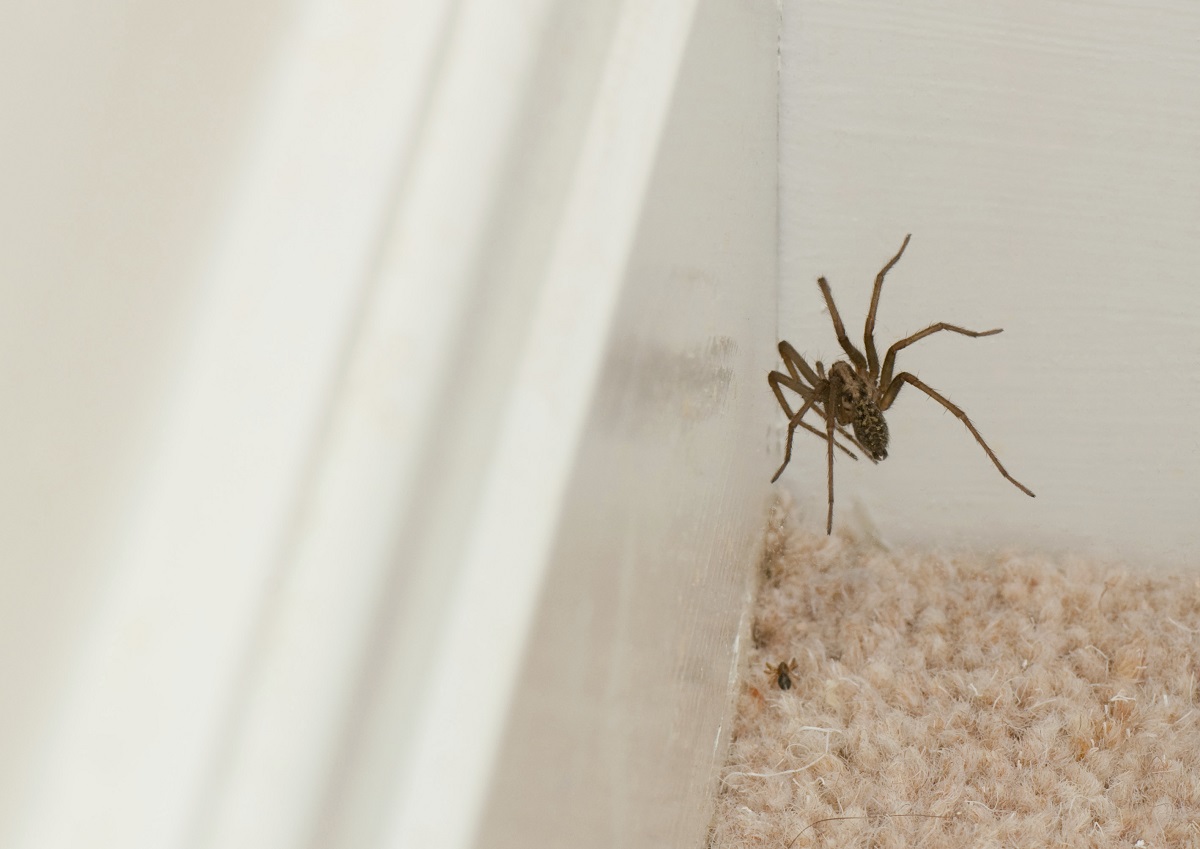
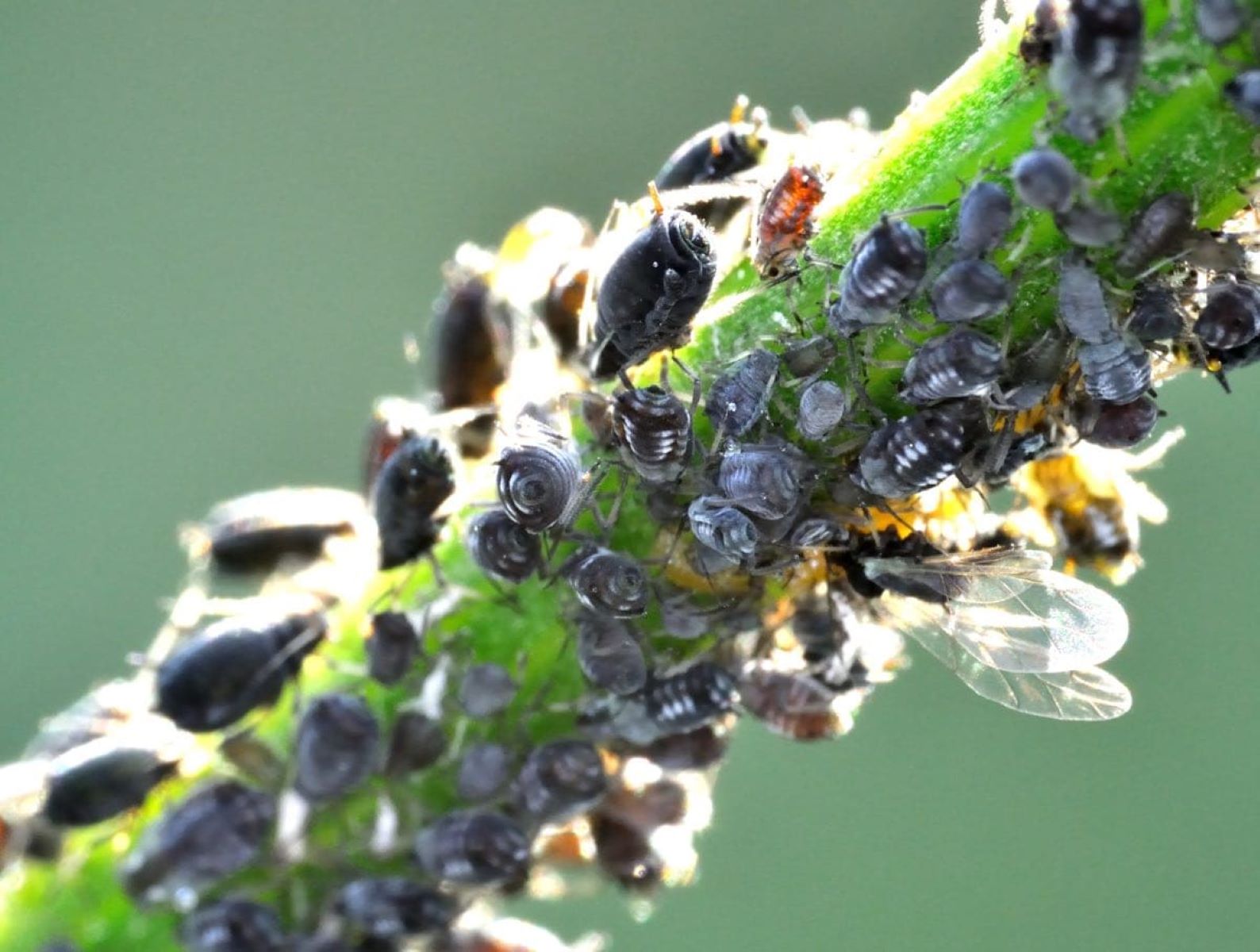
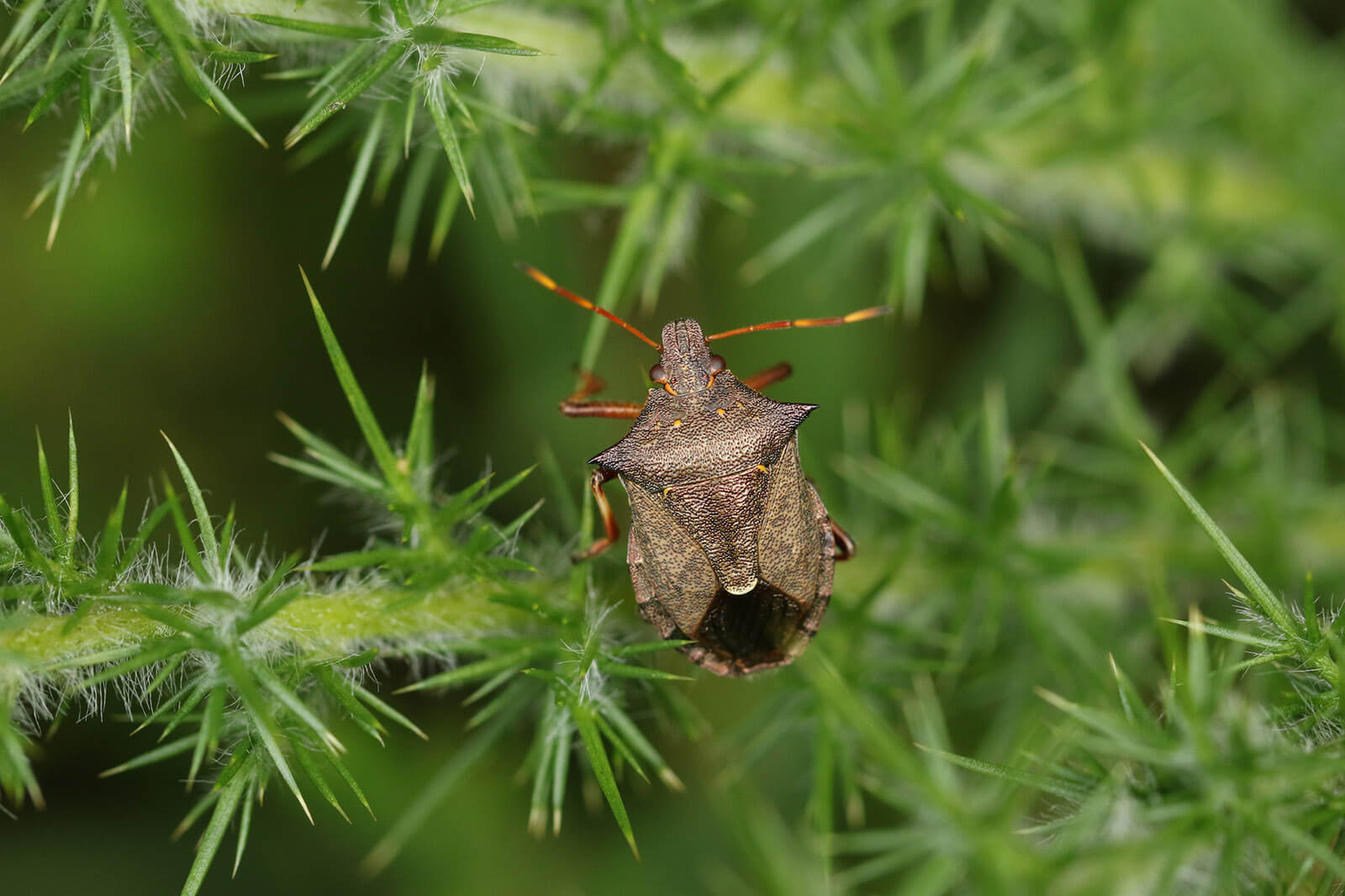

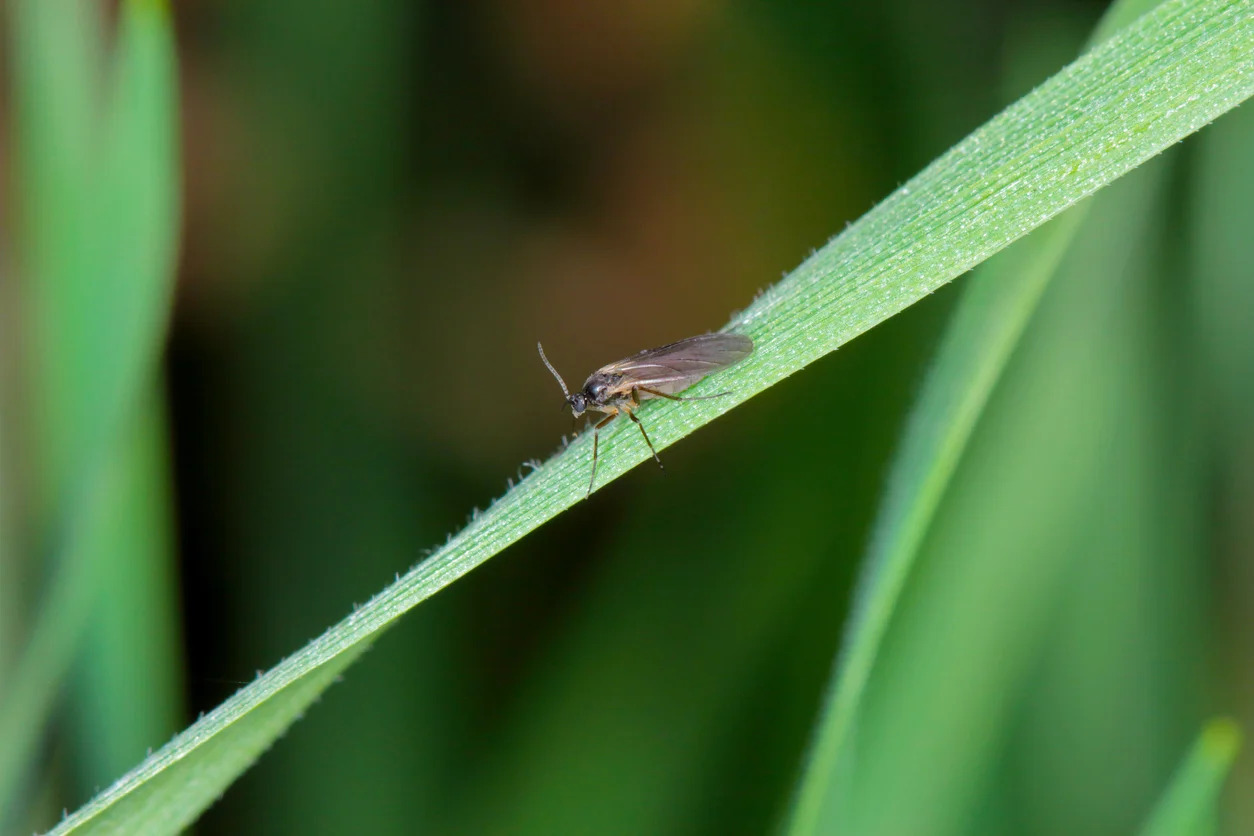

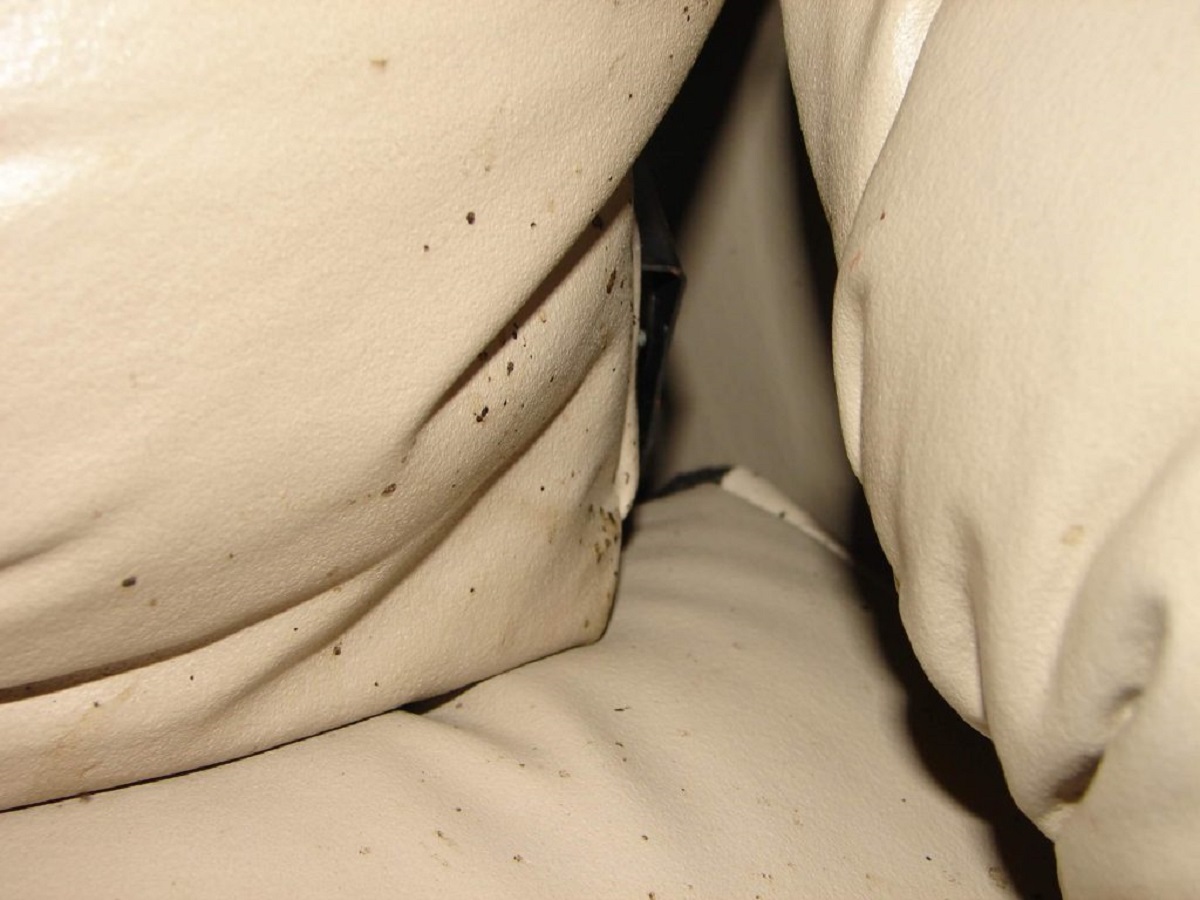

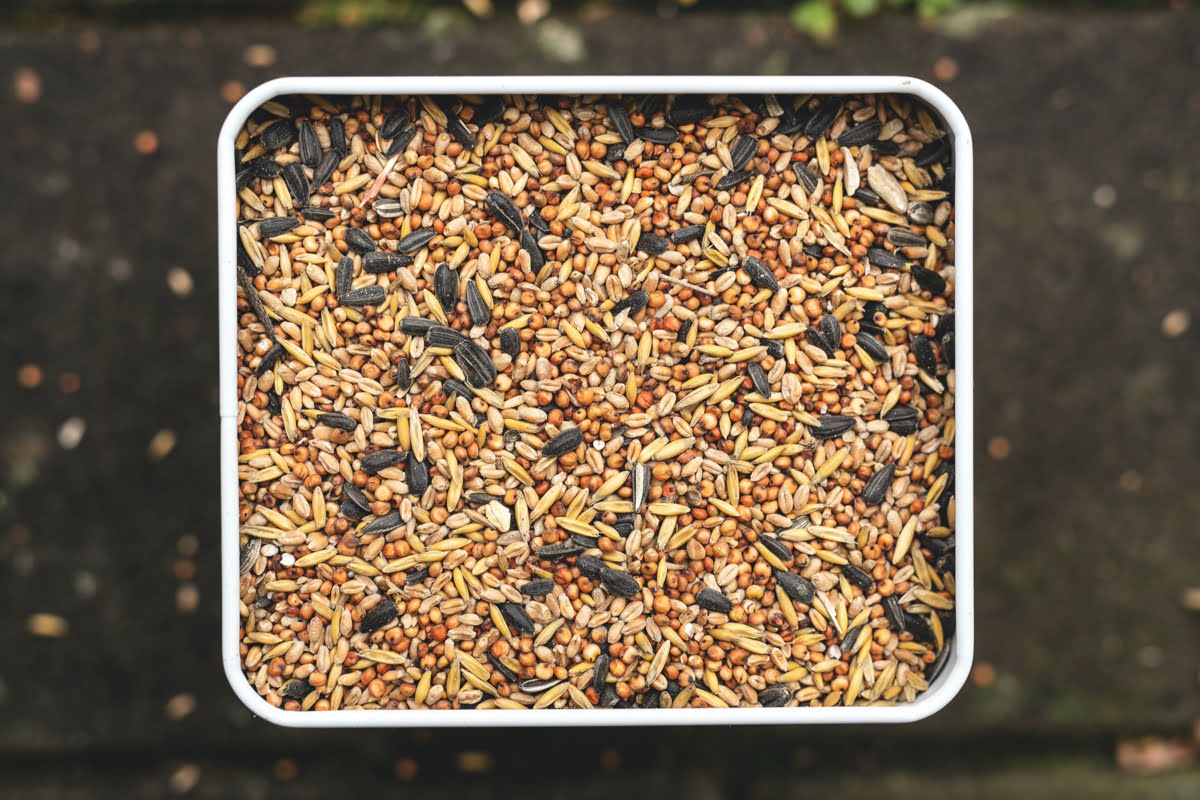

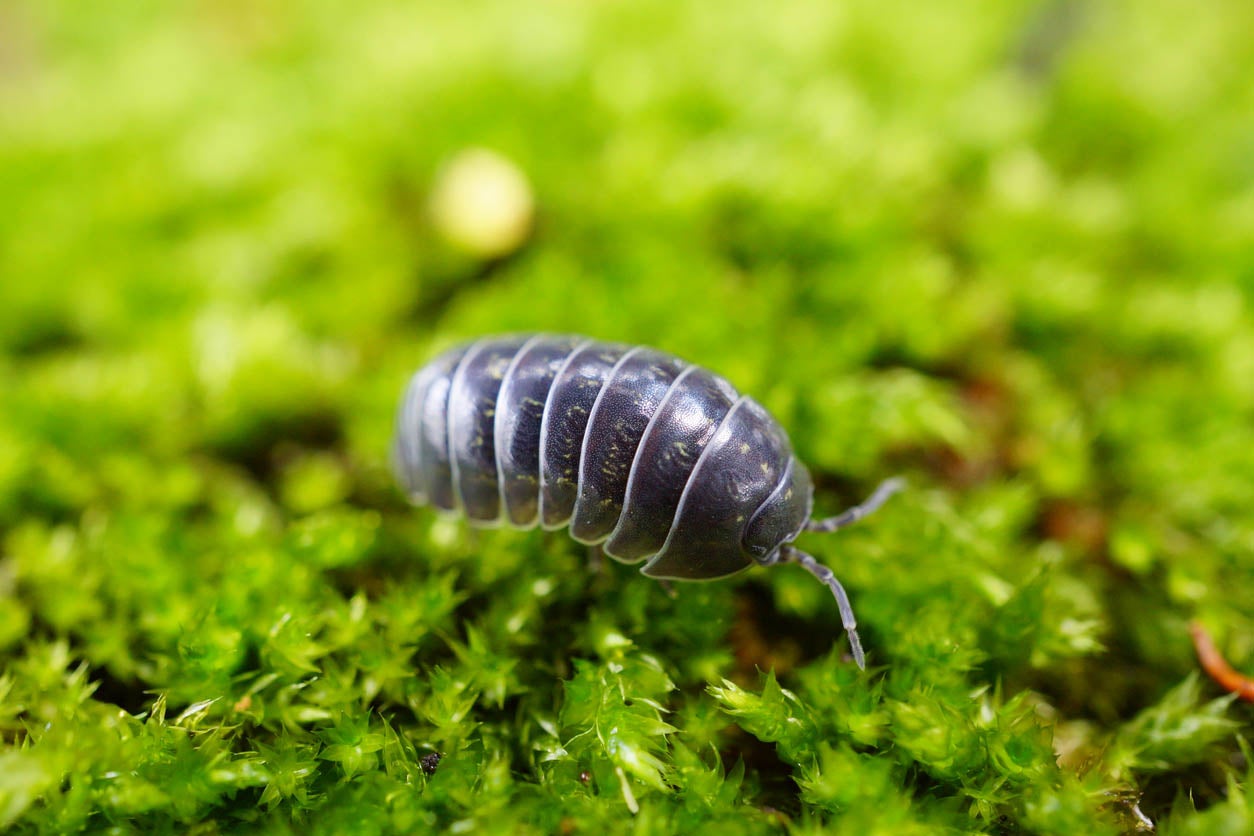

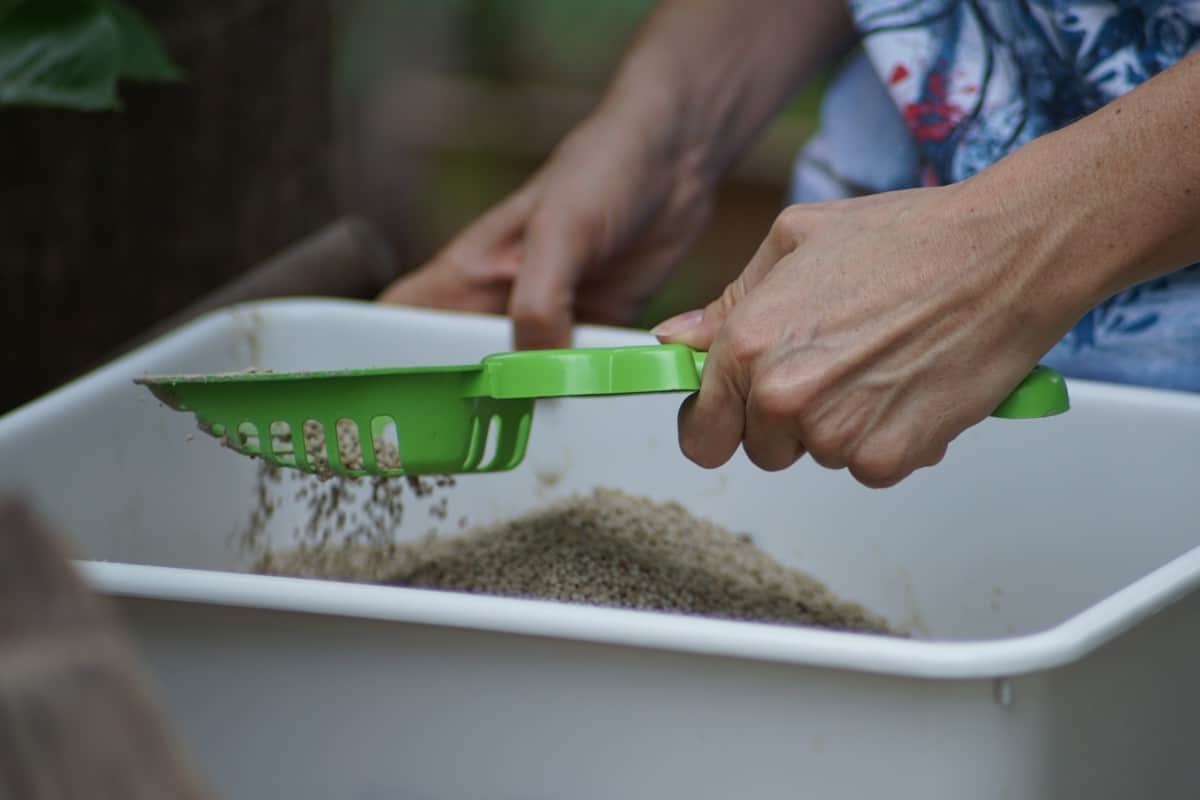

0 thoughts on “How To Get Rid Of Pantry Bugs”